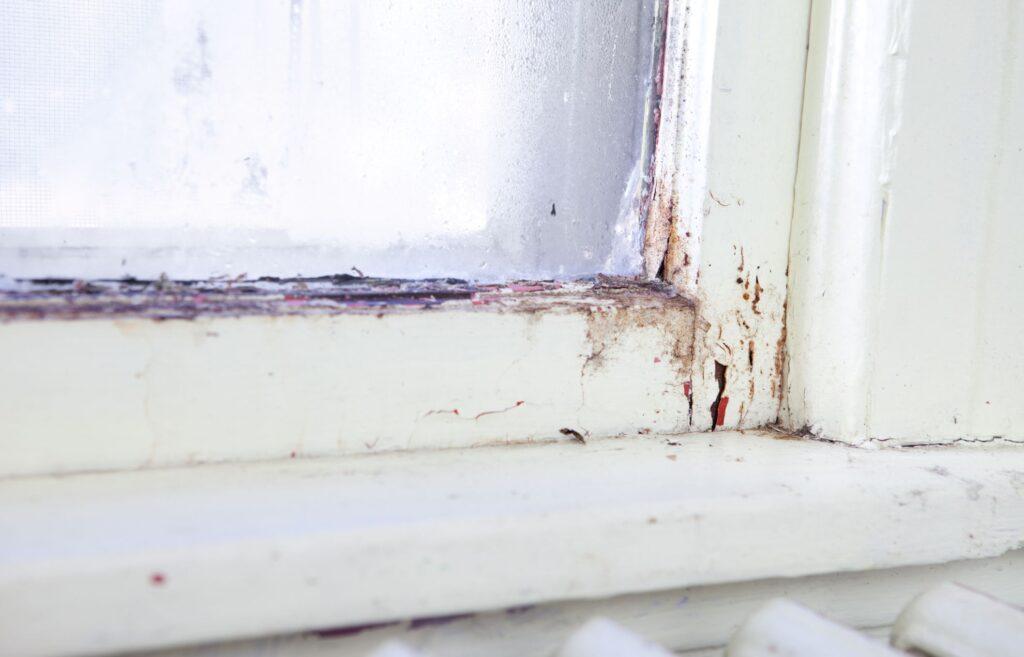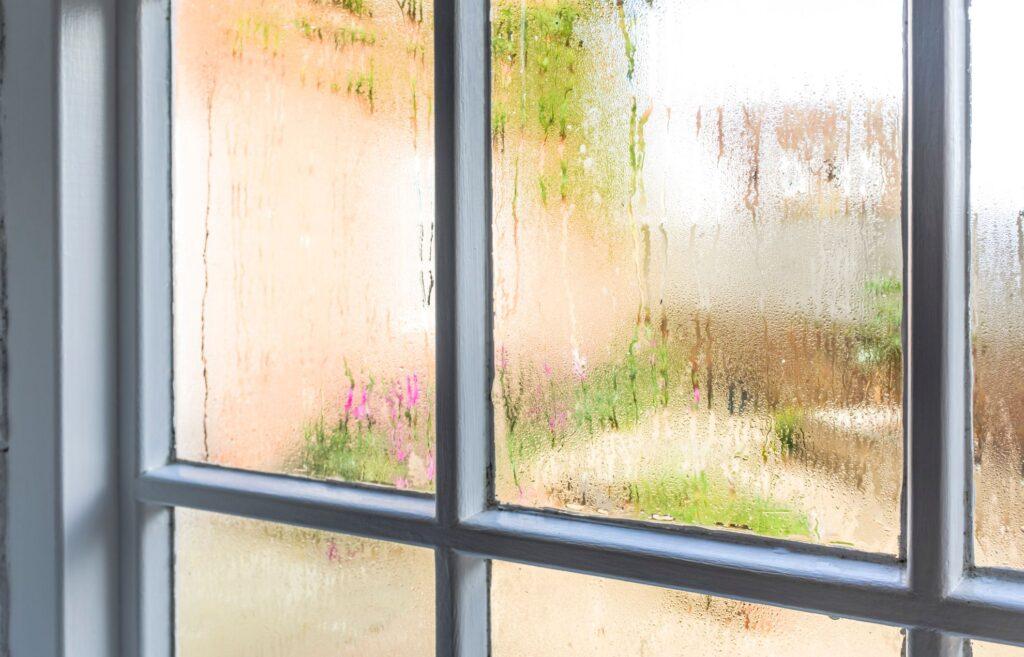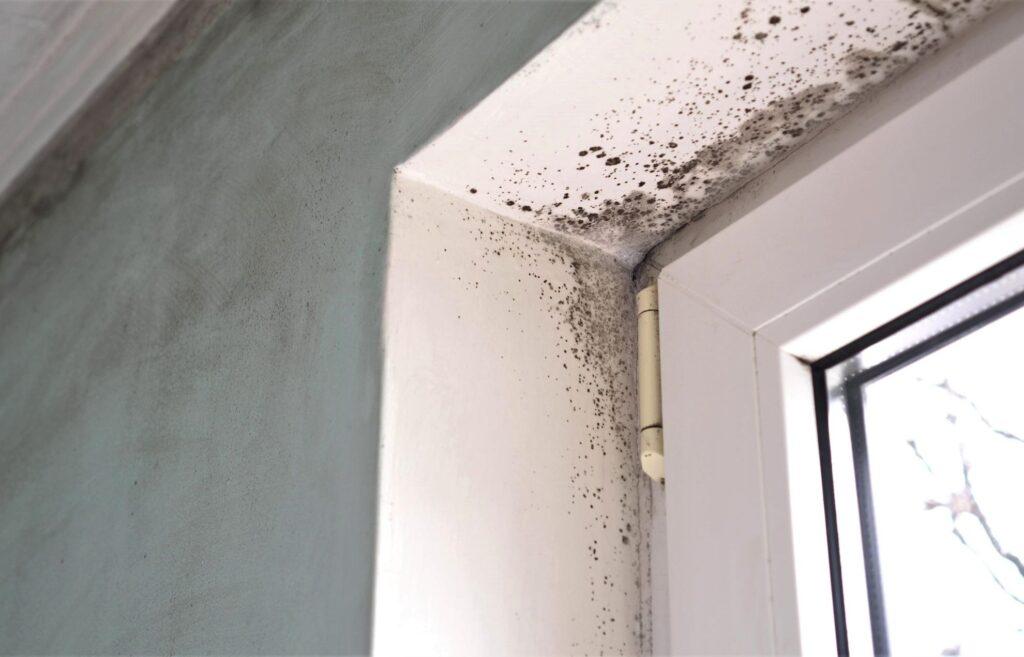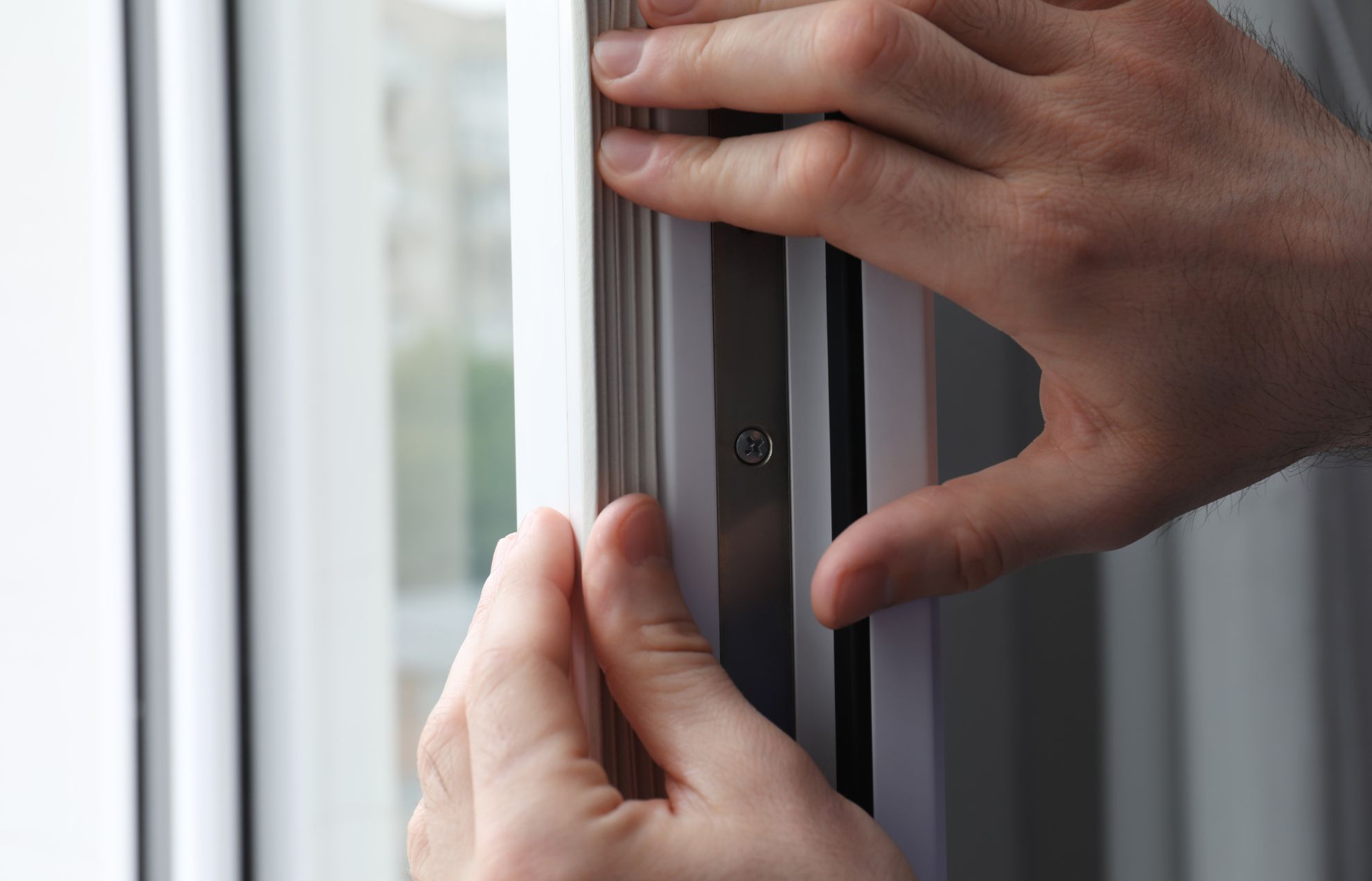Stopping Condensation and Moisture on Windows in Your Leicestershire Home
In this in-depth guide, we cover what condensation is, and the causes and provide our top tips on how to stop condensation on windows.
At Phair Windows, we know that maintaining a comfortable and moisture-free environment within your Leicestershire home is essential.
Condensation is a common occurrence in many homes, but if it becomes persistent and unchecked, it can cause mould and damp issues. Fortunately, there are many simple ways homeowners can deal with this.
In this article, we cover:
- What condensation is
- What causes condensation
- If condensation is bad
- How to stop condensation on windows
What is Condensation?
Condensation occurs when warm, moist air comes into contact with a colder surface, causing the air to release moisture in the form of water droplets.
Condensation is most noticeable on windows during colder months, as the temperature contrast between the indoor and outdoor air is more pronounced.
Is Condensation on Windows Bad?
Condensation on windows isn’t inherently bad, but persistent or excessive condensation can lead to dampness, mould growth, and potential damage to window frames. Managing condensation is important to maintain a healthy indoor environment and prevent issues associated with prolonged moisture exposure.
Related: Should New Windows Have Condensation on the Inside?
The Effects of Condensation
While condensation might seem like a minor inconvenience, it can lead to significant problems if not properly addressed.
Prolonged exposure to excess moisture can contribute to mould growth, which not only damages the aesthetic appeal of your windows but also poses health risks to occupants, particularly those with respiratory issues.
Additionally, condensation can potentially damage window frames and sills over time.
How Condensation Can Damage Windows
Condensation can harm windows by promoting mould, weakening materials, and causing cosmetic issues. For uPVC windows, intense sunlight with wet seals can lead to cracking due to expansion and contraction. Wooden frames suffer:
- Peeling paint and varnish.
- Drying and cracking wood trim.
Excessive moisture can damage uPVC and wood, causing discolouration. Mould growth poses health risks. Preventive measures include ventilation, insulation, and moisture control for long-lasting windows.

Remember, at Phair Windows, we’re committed to providing you with effective solutions to tackle condensation and maintain the integrity of your windows.
With our expertise and high-quality products, you can enjoy a home that’s not only visually appealing but also free from window condensation. If you’re struggling with damaged window frames from condensation, contact our team for a free quote.
What Causes Condensation on Windows?
Several factors contribute to the occurrence of condensation on windows. Poor ventilation, inadequate insulation, and excessive humidity levels within the home are some of the primary culprits.
When warm, humid air from cooking, showering, or even breathing comes into contact with cooler window surfaces, the moisture in the air condenses into water droplets.
Excess Moisture
The fundamental cause of condensation on windows is the presence of excess moisture in the air. This moisture consists of microscopic water droplets that are invisible to the naked eye.
When the air becomes more humid, these water droplets become more concentrated, increasing the likelihood of condensation occurring on various surfaces, including windows.
Humidity
Humidity plays a critical role in the condensation process. Imagine a glass of iced water on a hot summer day that appears to “sweat.” This phenomenon occurs because the warm air surrounding the glass is saturated with moisture.
As this warm, moisture-laden air comes into contact with the cold surface of the glass, it loses its capacity to hold all of the water droplets, resulting in their visible transformation into liquid water.
Molecules
To understand why moisture transforms into visible liquid at the point of contact with a cold surface, we must consider the behaviour of water molecules in different temperatures.
In warm air, these molecules are dispersed and spaced far apart, allowing the air to retain a significant amount of moisture. However, as the air cools down, the water molecules begin to gather and come closer together.
When these water molecules reach a certain proximity to each other, they merge and condense into visible liquid water. This critical point is known as the “dew point.”
At the dew point, the concentration of water molecules in the air is so high that it surpasses the air’s capacity to hold them, leading to the formation of water droplets on surfaces like windows.
When Can Condensation Form?
Condensation isn’t limited to windows; it can form on any cold surface. Here are some scenarios where you might notice condensation:
- After a Shower: Condensation on a mirror after taking a hot shower is a prime example of the dew point in action. The steam from the shower increases the humidity in the bathroom, and when it comes into contact with the cooler mirror surface, condensation occurs.
- After Cooking: Have you ever noticed your kitchen windows steaming up while cooking a hearty meal? The steam and moisture released during cooking raise the humidity levels in the kitchen. As this humid air meets the colder surface of the window, condensation takes place.
- Indoor Clothes Drying: When you dry your clothes indoors, you introduce additional moisture into the air. As this moisture-rich air encounters the chill of the window pane, condensation forms.

Areas Prone to Condensation
Condensation can also form in specific areas due to trapped moisture. Keep an eye out for condensation in the following scenarios:
- Windows with Blinds or Curtains: Blinds or curtains can impede proper air circulation around windows, creating a microenvironment where moisture becomes trapped and leads to condensation.
- Behind Large Furniture Against Cold Walls: Large furniture placed against external walls can limit air circulation, causing moisture to become trapped and encouraging condensation to develop.
- Inside Fitted Wardrobes on External Walls: Fitted wardrobes located against external walls can experience condensation due to restricted air movement and the temperature contrast between the wardrobe’s interior and the colder wall surface.
Tips to Stop Condensation on Windows
By understanding how condensation is formed, there are steps you can take to manage and prevent moisture from forming in the first place. From controlling indoor humidity levels to ensuring proper ventilation, addressing the root causes can lead to a more comfortable and moisture-free living environment.
Here are some effective ways to keep your windows moisture-free:
1. Improve Ventilation
Proper ventilation is crucial for maintaining balanced humidity levels in your home. Use exhaust fans in bathrooms and kitchens to expel moist air, and ensure that your windows can be opened to allow for fresh air circulation.
2. Install Double Glazing Windows
Double glazing windows, like those offered by Phair Windows in Leicester , provide an extra layer of insulation and reduce the temperature difference between indoor and outdoor surfaces. This minimises the likelihood of condensation forming on the glass.
3. Use Dehumidifiers
Invest in a dehumidifier to regulate indoor humidity levels. This device removes excess moisture from the air, making it less likely that condensation will occur.
4. Monitor Humidity Levels
Keep an eye on indoor humidity levels using a hygrometer. Ideally, the relative humidity should be maintained between 30% and 50% to discourage condensation.
5. Insulate Your Home
Proper insulation not only helps maintain comfortable indoor temperatures but also reduces the chances of condensation forming on surfaces. Ensure that your home’s insulation is up to date and effectively sealing any gaps that could let in cold air.
6. Open Bedroom Windows at Night
During sleep, exhaled warm air from breathing raises humidity levels. When windows are shut, this moisture-laden air has no outlet, resulting in condensation. Opening the window facilitates the escape of warm air, curbing condensation buildup.
7. Dry Clothes Outside
Damp garments hung on an airer or radiator emit moisture into the air, heightening humidity and triggering condensation. Ideally, air-drying clothes outdoors is recommended. However, if weather hampers this, open windows to facilitate air circulation. Opt for rooms with ample windows and sunlight to dry clothes quicker.

How to Stop Condensation on Windows Overnight
Condensation on windows overnight occurs when warm, humid air comes into contact with cooler surfaces, such as windows, causing the moisture in the air to condense into water droplets. To reduce or prevent condensation on your windows, you can follow these steps:
- Control Indoor Humidity:
- Use a dehumidifier to remove excess moisture from the air. Keeping indoor humidity levels between 30-50% can help prevent condensation.
- Properly vent your home by using exhaust fans in bathrooms, kitchens, and laundry rooms to expel humid air outside.
- Improve Ventilation:
- Open windows for a short period of time to allow fresh air to circulate and exchange with the indoor air, especially during warmer parts of the day when the outside air is drier.
- Use ceiling fans or other fans to promote air movement throughout the room.
- Insulate Windows:
- Install double- or triple-pane windows with insulating gas between the panes to create a barrier between indoor and outdoor temperatures.
- Apply weatherstripping or caulk around windows to seal gaps and reduce the exchange of indoor and outdoor air.
- Use Thermal Curtains or Blinds:
- Thermal curtains or blinds have insulating properties and can help create a barrier between the cold window surface and the warmer indoor air, reducing condensation.
- Avoid Hanging Wet Clothes Indoors:
- Hanging wet clothes or towels indoors can significantly increase indoor humidity, contributing to condensation. Try to dry clothes outdoors or in well-ventilated areas.
- Maintain Consistent Temperatures:
- Keep indoor temperatures relatively stable. Rapid temperature changes can encourage condensation, as warm air cools quickly on cold window surfaces.
- Use Window Insulator Kits:
- Window insulator kits are transparent plastic sheets that you can attach to the interior side of windows using double-sided tape. They create an additional insulating layer that reduces heat transfer and condensation.
- Check for Leaks or Seals:
- Inspect windows for any leaks or gaps that might be allowing warm, moist air to escape and condense on the cooler glass surface. Seal these gaps as needed.
- Consider Window Film or Coatings:
- There are window films or coatings available that can help improve insulation and reduce condensation. They can be applied to the window glass.
- Use Silica Gel Packs:
- Place silica gel packs on window sills to absorb excess moisture. Just remember to replace them periodically as they become saturated.
While these steps can help reduce condensation, in extremely cold weather conditions, some level of condensation might still occur due to the temperature difference between indoor and outdoor environments. If you’re dealing with persistent and excessive condensation issues, consulting with a professional contractor or HVAC specialist may provide tailored solutions for your specific situation.
Summary on How to Stop Condensation on Windows in Leicester
Condensation on windows is a common issue that can have various detrimental effects on your home. By knowing its causes, how to stop condensation on windows, and implementing effective prevention strategies, you can keep moisture in your home at bay.
However if condensation-triggered dampness and mould keep occurring, consider long-term solutions to stop it coming back. Install extractor fans in high moisture areas, upgrade your single glazed windows to double glazing, and fix any broken seals on your windows.
At Phair Windows, we’re dedicated to providing you with high-quality double glazing solutions that can significantly reduce the occurrence of condensation, ensuring your windows remain clear and your home remains comfortable year-round.
We’re a double glazing installer supplying windows, doors, conservatories, conservatory roof replacement, porches, orangeries, and roofline across Leicestershire and the East Midlands. Get in touch with us today for a free no-obligation quote.
FAQs on How to Stop Condensation
To prevent overnight condensation on windows, ensure adequate ventilation by slightly opening windows or using trickle vents. Maintain consistent room temperature, use a dehumidifier, and avoid drying clothes indoors. These measures help reduce moisture buildup and the likelihood of condensation forming.
To counter condensation on windows, consider using absorbent materials like moisture-absorbing crystals or insulating window film. Additionally, employing window insulation kits, ensuring proper ventilation, and maintaining consistent indoor temperatures can help mitigate condensation issues effectively.
Excessive window condensation often results from high indoor humidity, inadequate ventilation, and temperature differences between indoors and outdoors. Addressing these factors by improving ventilation, regulating room temperature, and managing moisture solve the issue, and stop mould forming.
To combat winter window condensation, maintain a consistent indoor temperature, ensure proper ventilation by using extractor fans or opening windows briefly, and reduce moisture sources like drying clothes indoors. Proper insulation methods and using dehumidifiers can also help stop condensation.
Related Articles:
- 5 Causes & Signs of Double Glazing Failure
- Do Trickle Vents Help Stop Condensation?
- Should New Windows Have Condensation on the Inside?
- What is Double Glazing? How Does it Work?
- How to Stop Draughts From uPVC Windows
- How to Fix Blown Double Glazing & Clear Misted Windows






